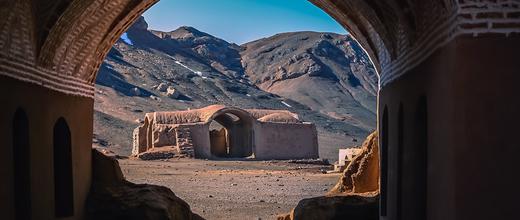The interplay between diverse religious beliefs often yields fascinating intersections that prompt deeper exploration. One such confluence lies between Zoroastrian prophecies and the Baha’i Faith, two distinct spiritual traditions that possess an intriguing symmetry. This exploration elucidates the shared themes, eschatological narratives, and the enduring significance of Zoroastrianism within the Baha’i framework, revealing layers of understanding that beckon further inquiry.
Zoroastrianism, one of the world’s oldest monotheistic faiths, has historically influenced various religious traditions, including Judaism, Christianity, and Islam. Its prophetic narratives articulate a vision of an eventual savior figure, known as the Saoshyant, whose arrival heralds the renewal of the world. The zeal with which Baha’is engage with Zoroastrian prophecy reflects not only an acknowledgment of historical context but also a profound recognition of the intertwined destinies of humankind.
At the heart of Zoroastrian prophecy lies the concept of time as a cyclical and finite phenomenon leading to a decisive conclusion. The belief in the Saoshyant’s arrival, who will resurrect the dead and usher in an era of universal peace and righteousness, offers a compelling narrative parallel to Baha’i teachings. Baha’is hold that their Founder, Baha’u’llah, fulfills the role of the prophesied one, heralding a new epoch characterized by unity and the dissolution of sectarian barriers.
This connection invites a deeper examination of how prophetic traditions can converge, leading to the question: why do Baha’is find such resonance in Zoroastrian teachings? This convergence can be attributed to several key factors: historical context, theological underpinnings, and the universal themes of hope and renewal.
Historical Context
The historical backdrop of the Baha’i Faith reveals an era of tremendous turmoil and transition. Emerging from a tumultuous milieu infused with prophetic thought, Baha’u’llah’s teachings encapsulate the zeitgeist of an age anticipating messianic fulfillment. Zoroastrianism, ever an indelible part of the Persian landscape, speaks to this prophetic tradition. Thus, for Baha’is, Zoroastrian prophecies not only reflect a shared regional heritage but also resonate with a broader spiritual awakening.
Theological Underpinnings
The transcendental philosophies embedded within Zoroastrianism offer a parallel exploration of ethics and morality, aspects that are crucial within the Baha’i framework. The Zoroastrian dichotomy of good versus evil, embodied by the actions of the divine architect Ahura Mazda and his adversary Ahriman, finds echoes in the Baha’i teachings regarding the eternal struggle between truth and falsehood. Both traditions advocate for a comprehensive understanding of the human condition, beckoning followers to elevate their moral consciousness.
Baha’is interpret Zoroastrian texts not solely as ancient scripture but as milestones within a progressive revelation—one that culminates in the teachings of Baha’u’llah. This acknowledgment fosters a greater appreciation for the evolutionary nature of truth, thus underscoring the importance of an inclusive theological discourse that honors the contributions of previous revelations.
Universal Themes of Hope and Renewal
At the crux of Zoroastrian prophecy lies an underlying message of hope and the promise of renewal. The apocalyptic vision of the world undergoing transformation resonates deeply with Baha’i aspirations for a global society marked by justice and harmony. This recurring motif serves as a catalyst for motivation, galvanizing individuals toward collective actions that reflect the ethical imperatives both traditions espouse.
The Bahá’í worldview supports active engagement in social betterment, positing that the establishment of global peace necessitates a conscious effort to implement spiritual principles in everyday life. Zoroastrian teachings emphasize the significance of personal responsibility and righteous deeds, which dovetails with the Baha’i commitment to fostering a just society. This shared focus on personal agency and communal upliftment renders both traditions profoundly relevant in addressing contemporary societal challenges.
Modern-Day Reflection and Interfaith Dialogue
The dialogue between the Zoroastrian and Baha’i communities can serve as an invaluable opportunity to nurture understanding across cultural and religious divides. Interfaith dialogue can illuminate common threads while simultaneously honoring the distinct identities of each faith. Engaging with Zoroastrian prophecy enables Baha’is to deepen their comprehension of spiritual fulfilment while allowing Zoroastrians to witness their historical significance reflected in the Baha’i narrative.
Furthermore, as global interconnectedness intensifies, the relevance of these ancient prophecies in contemporary discourse becomes strikingly evident. Individuals who seek meaning and purpose invariably grapple with questions about the future and the potential for societal transformation—particular themes that are heavily woven into both Zoroastrian and Baha’i teachings. Recognizing these connections can bolster interfaith cooperation on crucial issues, such as climate change, human rights, and global peace efforts.
Conclusion
The nexus between Zoroastrian prophecies and the Baha’i Faith represents a fertile ground for scholarly inquiry and spiritual reflection. These interconnected narratives not only amplify the rich tapestry of human religious experience but also serve as a poignant reminder of the enduring quest for understanding and harmony. By delving into the teachings of both traditions, adherents are better equipped to navigate the complex spiritual landscape of contemporary society while fostering robust interfaith dialogue—a hallmark of a united global future.
